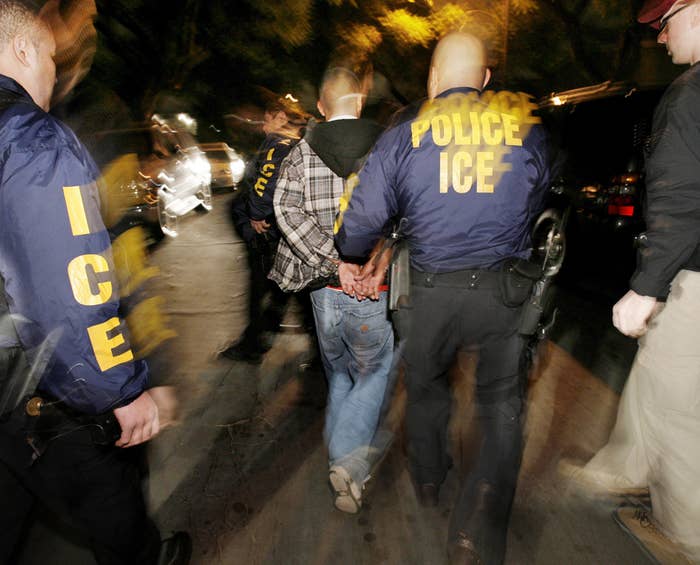
Immigration and Customs Enforcement officials arrested more than 100 immigrants across California in an operation last week, the latest effort by the agency to target the state and its policies that reduce the cooperation between local police and federal agents when it comes to immigration enforcement.
The details of the operation, which occurred last week in Northern and Southern California and were described to BuzzFeed News by a source with knowledge of it, are expected to be released in a news conference on Wednesday in Washington, DC.
ICE’s acting leader, Tony Pham, and Chad Wolf, the acting Department of Homeland Security secretary, plan to slam local officials for so-called sanctuary policies, in which local officials refuse to hold immigrants in their custody who are wanted by ICE for longer than required by local laws or to inform ICE of when the immigrants will be released from custody.
While ICE operations on the street tend to command attention, the agency prefers to focus deportation efforts on local jails, where officers can pick up inmates without being forced to use more resources to make arrests in the field.
In an advisory released to the media on Tuesday evening, DHS officials said the press conference would “announce the results of recent California-based enforcement actions led by ICE to target at-large aliens subject to removal who were arrested or convicted for crimes, but were released by state or local law enforcement agencies, despite having active immigration detainers in place.”
The Washington Post previously reported that the agency had plans to target so-called sanctuary cities.
The press conference will come just days after ICE installed bold black-and-red billboards along highways across the key swing state of Pennsylvania, depicting the faces of, as ICE put it, “at-large immigration violators who may pose a public safety threat.” Current and former ICE officials, along with legal experts, labeled the move as politically motivated, a naked attempt to use the wedge issue of immigration to help President Donald Trump in his reelection bid.
Since the beginning of the Trump administration, Homeland Security officials have attacked local governments that do not cooperate with immigration enforcement, especially jails that refuse to hold immigrants and hand them over to ICE. Many local governments have declined to collaborate with ICE, with some officials saying it will deter law-abiding immigrants from helping law enforcement solve crimes, thus putting public safety at risk.
The administration has released “reports” on counties with sanctuary policies and has tried, often unsuccessfully, to sue them and strip them of federal funds. The policies enacted by sanctuary cities and counties do not prevent ICE from picking up immigrants once they are released from criminal custody.
In California, county jails are allowed to respond to an ICE request for notification of an inmate’s release date only if the person has been convicted of a serious crime or is headed to trial on such a charge. Many counties, including in the Bay Area, have set up complicated flowcharts describing when deputies can respond.
Advocates and city officials in many places in the US believe that local jurisdictions are well served by sanctuary laws, allowing all people — regardless of status — to fully engage with public services, including police, schools, and healthcare, rather than live in the shadows.
Federal officials, however, argue the opposite. They believe that so-called sanctuary laws threaten lives, especially laws that lead local jails to release many undocumented people rather than turning them over to federal agents.
The billboards and the operation come at a volatile period for the Department of Homeland Security, which has been slammed for its politicization during an election year. Critics point to DHS officers being deployed to Portland, Oregon, where tear gas was used against protesters outside a federal courthouse. DHS leaders said the effort was necessary to protect federal property.
The agency had limited at-large operations during the coronavirus pandemic, but in late September it changed language on its website to indicate that enforcement would begin again as normal.
